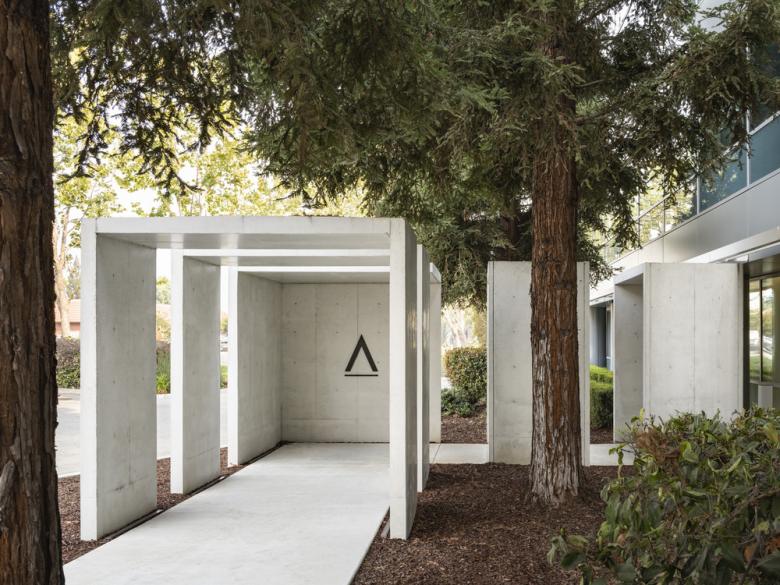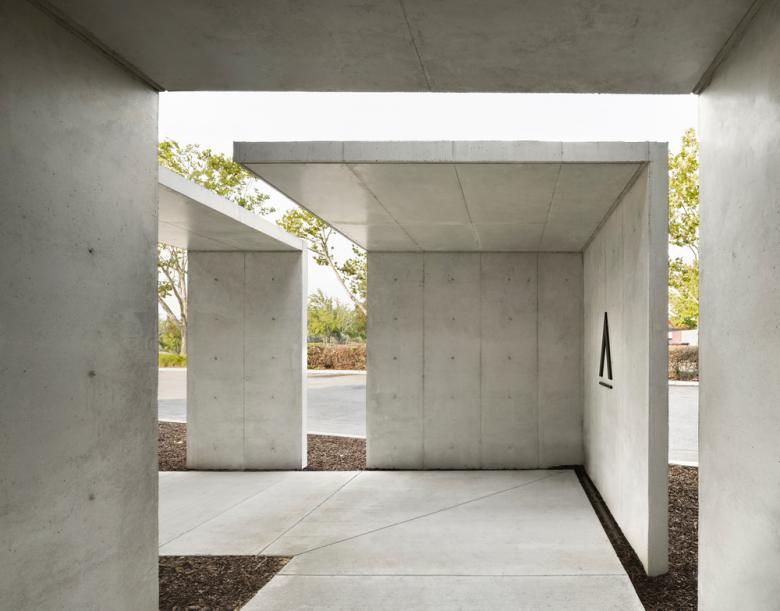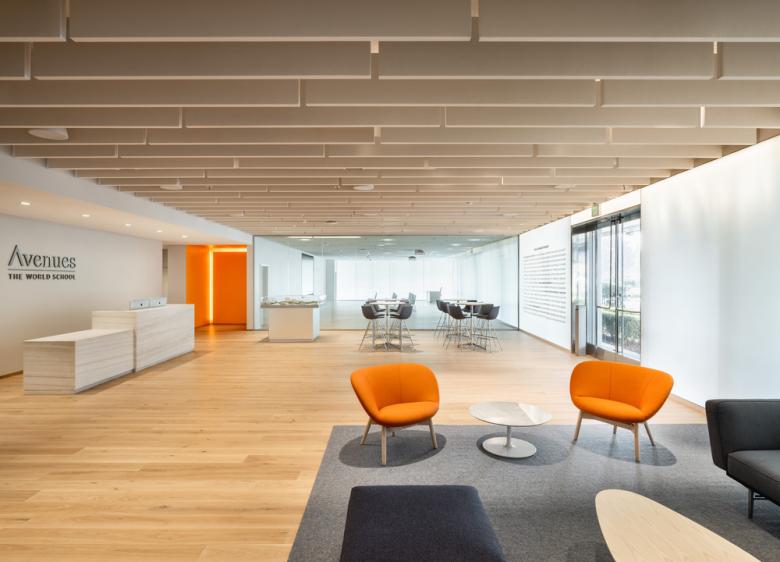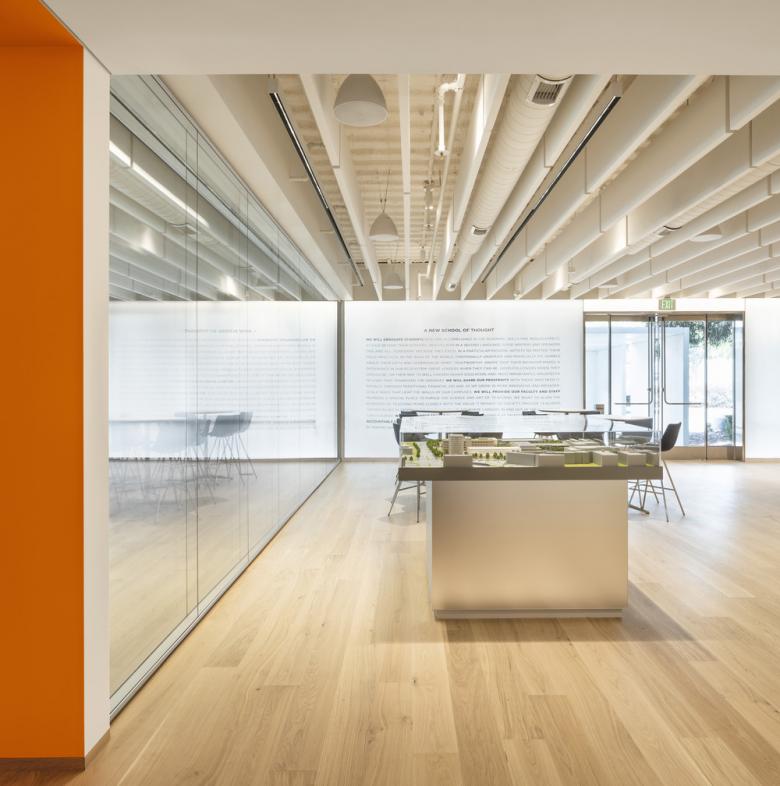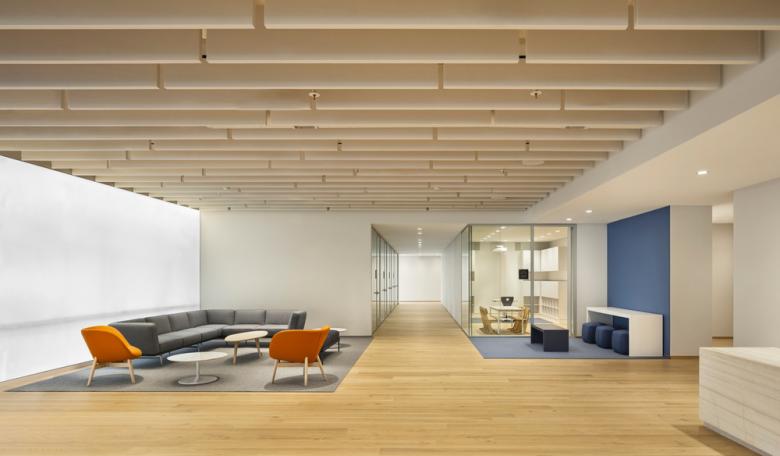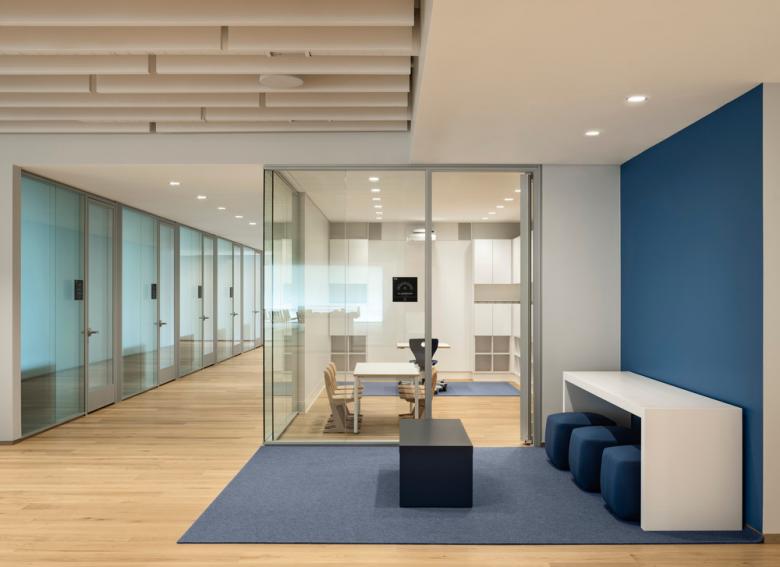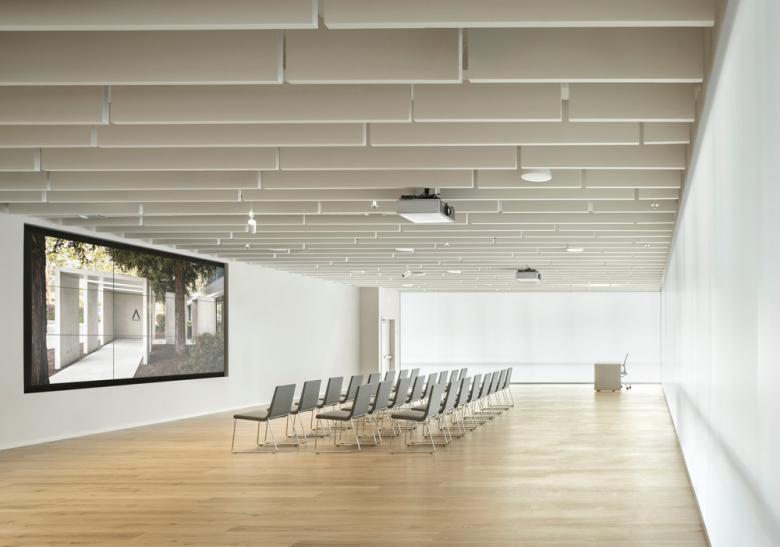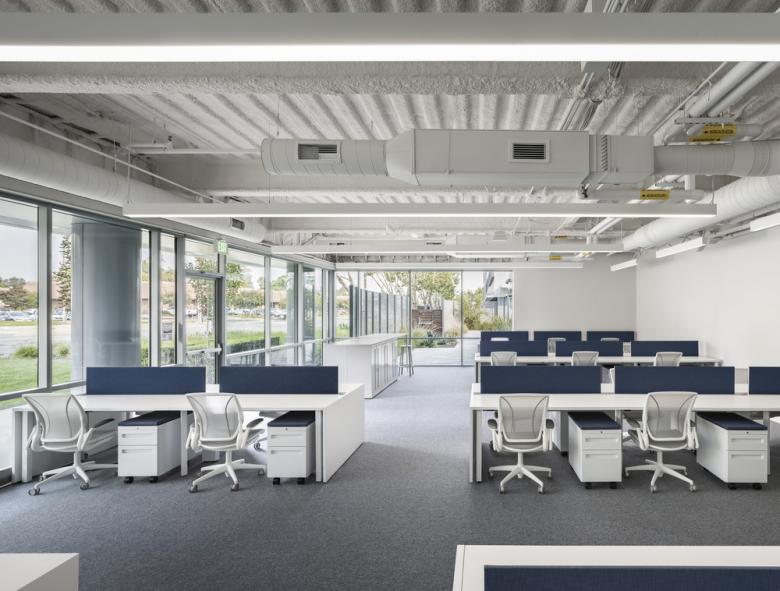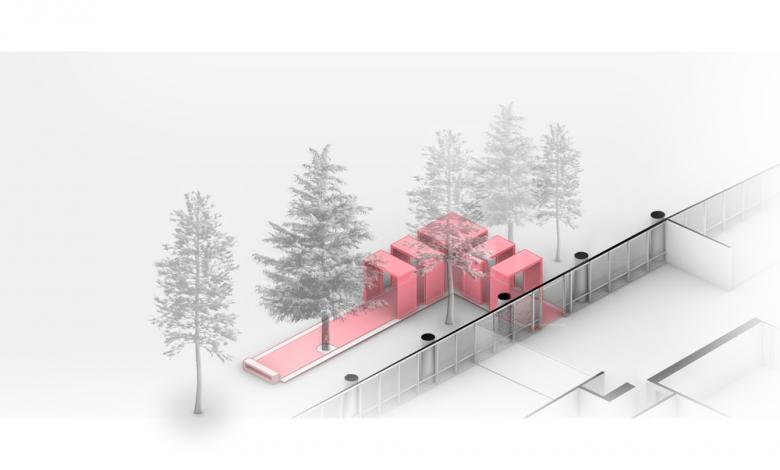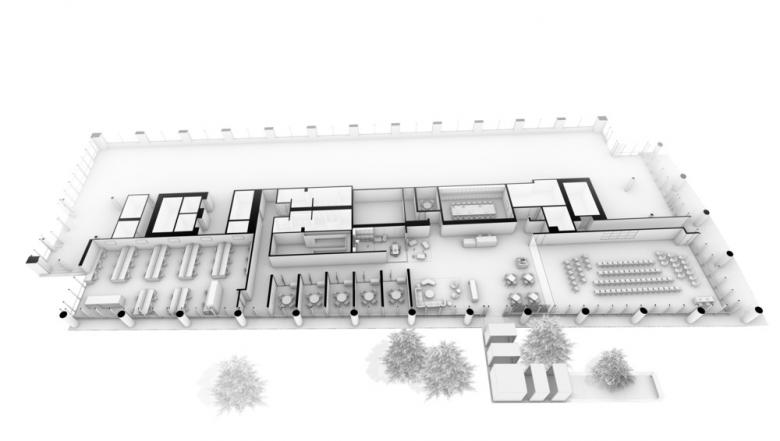US Building of the Week
Community Information Center
Efficiency Lab for Architecture
5. April 2021
Photo: Blake Marvin (All images courtesy of v2com)
The first Avenues: The World School opened in 2012 inside a former industrial building next to the High Line in New York City, setting a precedent of adaptive reuse for the international system of schools. The first piece of the Avenues Silicon Valley Campus transforms part of an old office building into an information center for the parents of prospective students. Efficiency Lab for Architecture answered a few questions about the project.
Location: San Jose, California, USA
Client: Avenues: The World School
Design Architect: Efficiency Lab for Architecture
Architect of Record: Adamson Associates
MEP: Syska Hennesy
Structural Engineer: SOM
Civil Engineer: Kimley Horn
Lighting Designer: Claude Engel
Acoustical: Longman Lindsay
Area: 10,000 sf
Photo: Blake Marvin
What were the circumstances of receiving the commission for this project?Since 2017, Efficiency Lab for Architecture has been the Global Design Architect for Avenues: The World School, an organization dedicated to providing transformative, world-focused learning experiences to students around the globe. As the global design architect, the firm has implemented design solutions for the school from large scale campus master planning to building design, interior design, and furniture design around the world, including San Jose, Miami, New York, São Paulo and Shenzhen. Efficiency Lab master-planned the Avenues Silicon Valley Campus and completed the entitlements process during 2019-2020. The Community Information Center (CIC) is the first phase of the campus development.
Photo: Blake Marvin
Please provide an overview of the project.The Community Information Center (CIC) will serve as an enrollment center for making presentations to parents of prospective future students ranging in age from toddlers through 12th grade. The project is an adaptive reuse of half of the ground floor of an existing three-story commercial office building, infusing a wide-open floor plan comprised of a reception/lounge area, an 80-person presentation room, meeting rooms, interview rooms, and staff offices.
Photo: Blake Marvin
External design elements set the mood for visitors to the new CIC, led by an innovative design approach focused on transitioning attention away from the hustle and bustle of surrounding roads and an adjacent parking lot. A series of concrete portals through existing redwood trees define a new entry sequence to the project. As visitors enter the building, entry into the presentation room passes through an additional threshold portal, this time in the form of a bright orange box, illuminated by cove lighting along the edge of its frame. Passing through the colorful entry portal, a clean, modern, open floor plan emerges, revealing visual continuity of spaces framed between engineered European hardwood oak floors and an acoustic ceiling that stretch across its entirety. The space artfully combines hints of industrial design and strategic uses of geometry and light, creating a stimulating ambiance that is conducive to thinking and learning.
Photo: Blake Marvin
A translucent fabric scrim is stretched over an expansive window, creating a museum-like spatial quality, with the frameless scrim diffusing natural light, while doubling as a projection screen for the presentation room. A 30-foot, double-paned glass partition separates the presentation room from the lounge area, where a second fabric scrim is installed along a wall, bearing the printed mission statement of the school. The seamless glass partition ensures visual continuity of the space, while also serving as an acoustic barrier between the two zones.
Photo: Blake Marvin
What are the main ideas and inspirations influencing the design of the project?As the global design architect of Avenues, an organic relationship with the school has developed over the past four years, and that has included joint research in the education sector. Many concepts derived from that research have been incorporated into the CIC, including portals, thresholds, niches and open plan studio.
Photo: Blake Marvin
How does the design respond to the unique qualities of the existing building?California is a driving culture, and the scale of open spaces around the buildings are calibrated to the car scale. The existing building is wrapped around by large areas of asphalt, for roads and parking lots. The project re-established the building entrance as a walkway through existing red wood trees along the side of the building, transforming the entry experience back to human scale. To further focus the visitor’s attention a series of concrete portals are created along the walkway, in L-shaped formation, creating a pathway of geometric sensory that is reminiscent of an art installation.
Photo: Blake Marvin
What products or materials have contributed to the success of the completed project?- Translucent Stretched Fabric: Barrisol
- Interior Glass Partition: Teknion
- European Oak Floor: Havwoods
- Acoustic Baffles: Lamvin
Email interview conducted by John Hill.
Drawing: Efficiency Lab for Architecture
Drawing: Efficiency Lab for Architecture
Related articles
-
Castle Black at Sea Ranch
on 1/31/22
-
Corten Ribbon
on 7/19/21
-
Pacifica Residence
on 7/12/21
-
Community Information Center
on 4/5/21
-
Ashes & Diamonds
on 8/26/19
